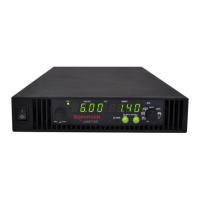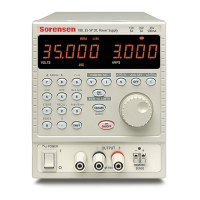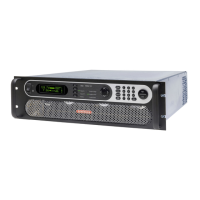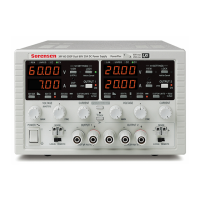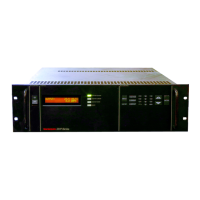Table 3–2. Analog Programming Connector, Designations and Functions
3.4 Remote Current Programming
Remote current programming can be summed with the front panel or digital setting;
see Section 3.3. Remote current programming is used for applications that require
the output current be programmed (controlled) from a remote instrument. An external
resistance or external voltage source or external 4-20mA source may be used as a
programming device. When using remote current programming, a shielded, twisted-
pair cable is recommended to prevent noise interference to programming signals.
3.4.1 Remote Current Programming by Resistance
Analog Reference source is selected as Resistance from the front Panel. Refer to
Figure 3-98. The resistance-programming default coefficient for output current is
(100% rated output current) / 5 kΩ, with input at Pin 20 (IPRG_ISOUR) and return to
Pin 18 (RTN_PRG). An internal current source, factory-set at 1 mA, from Pin 20 is
utilized to drive the resistance. This produces a transfer function for output current, as
follows:
Iout = R * (100% rated output current) / 5 kΩ), with R in kohms.
Full Scale current programming resistance can be modified from default 5kOhms to
any other value, from 2 kOhm to 10 kOhm. Refer to Section 3.1.8.3. Then the transfer
function for output current, as follows:
Iout = R * (100% rated output current) / FSC kΩ), with R in kohms.
If multiple switches or relays are used to select resistors to program different current
levels, make-before-break contacts are recommended.

